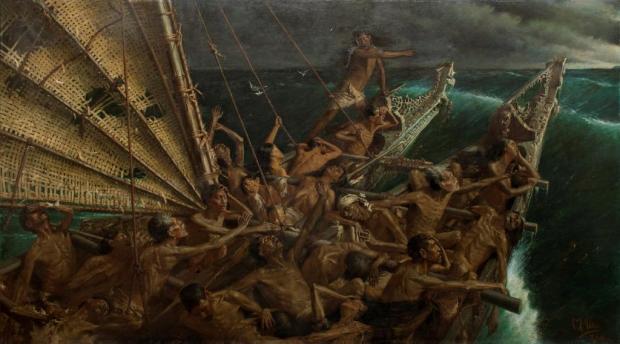task 1:
It’s said that Maori visual and material culture has been framed by predominantly western accounts. From reading the ‘Tangata Whenua’ book and Jonathan Mane Wheoki discussion of the ideas around ‘New Zealand Art History’ I have gathered that before the Europeans arrived to New Zealand, the Maori people were unaware of their unique art culture. The British then depicted and made New Zealand into their own art and that also included the depiction of the Maori people and what is known to be ‘Maori Art’. The first time we see of New Zealand and Maori art is through the Europeans perspective. “They were made aware of their own aesthetic concepts, and of the conventions governing them” (Wheoki, 7). The Euorpeans had taken notes of the Maori people “Only contemporary records of people as individuals and groups” (Anderson, 132). Within these notes the Pakeha (European) is seen though a their perspective without the Knowledge of Maori culture. The Maori were framed as these types of people who were cannibalism when in actual fact it was to do with survival and scarcity (Anderson,148). Through New Zealand art history we now see that the Pakeha Party seem to be superior to the Maori party as they then conveyed New Zealand though a European perspective.
Work cites:
Anderson, Atholl. Binney, Judith. and Harris, Aroha. “Chapter 5: In the Foreign Gaze”. Tangata whenua: An illustrated history. Ed. Atholl Anderson Judith Binney, and Aroha Harris. Aotearoa: Bridget Williams Books, 2014. 132-159. Print.
Mane-Wheoki, J. Art’s Histories in Aotearoa New Zealand. Journal of Art Historiography Number 4 June 2011.
task 2:
Peter Robinson “painting 1999”

Peter Robinson started painting “painting 1999” in 1998 using oil and acrylic paint on an unstretched canvas. On the canvas are key words and phrases of the Maori parties feelings. Robinson is from Maori heritage and this artwork was a confrontation to the European settlers at the time and is also relevant to today. Robinson’s painting beings you face to face with an issue that most people would not want to deal with. These issues are unfair history, racism and ones self-identity. (Anderson, 464). “Loaded symbols and rhetoric issue” (Anderson, 464). Through his artwork Robinson has conveyed the issue of his Maori ancestral problems and the mistreatment they went though, this is also relevant to today as people my still feel the same way.
work cites:
Anderson, Atholl. Binney, Judith. and Harris, Aroha. “Chapter 5: In the Foreign Gaze”. Tangata whenua: An illustrated history. Ed. Atholl Anderson Judith Binney, and Aroha Harris. Aotearoa: Bridget Williams Books, 2014. 464-484. Print.
